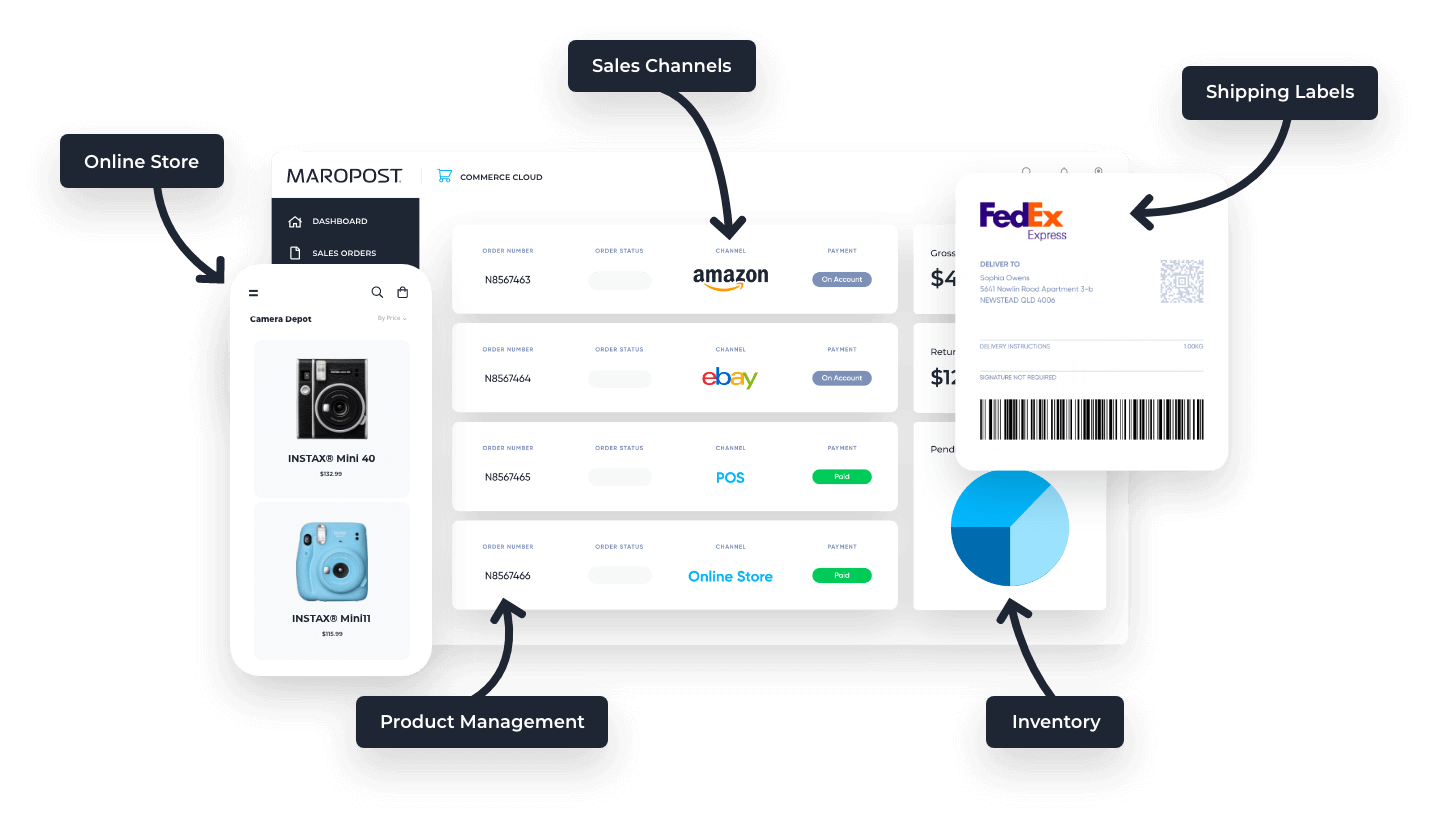Cloud computing is an infrastructure and software model that enables ubiquitous access to shared pools of storage, networks, servers, and applications.
It allows for data processing to be done a privately-owned cloud or a third-party server. This creates maximum speed and reliability. But the greatest benefit is its ease of installation, low maintenance, and scalability. This way it grows with your needs.
IaaS and SaaS cloud computing has skyrocketed since 2009 and now it’s all around us. In fact, you’re probably reading this on the cloud right now.
For some perspective on just how vital cloud storage and computing is to our daily lives, here are 8 real-world examples of cloud computing:
Examples of Cloud Storage
Ex: Dropbox, Gmail, Facebook
The number of cloud storage providers online seems to grow every day. Each competing over the amount of storage they can provide to clients.
Right now, Dropbox is the clear leader in streamlined cloud storage allowing users to access files on any device through its application or website with up to 1 terabyte of free storage.
Google’s email service provider Gmail, on the other hand, provides unlimited storage on the cloud. Gmail has revolutionized the way we send emails and largely responsible for the increased usage of email worldwide.
Facebook is a mix of the two, in that it can store an infinite amount of information, images, and videos on your profile. They can then be easily accessed on multiple devices. Facebook goes a step further with their Messenger app, which allows for profiles to exchange data.
Examples of Marketing Cloud Platforms
Ex: Maropost for Marketing, Hubspot, Adobe Marketing Cloud
A marketing cloud is an end-to-end digital marketing platform for clients to manage contacts and target leads. Maropost Marketing Cloud combines easy-to-use marketing automation and hyper-targeting of leads. At the same time, ensuring emails actually arrive in the inbox, thanks to its advanced email deliverability capabilities.
In general, marketing clouds fulfill a need for personalization. This is important in a market that demands messaging be “more human.” That’s why communicating that your brand is here to help, will make all the difference in closing.
Examples of Cloud Computing in Education
Ex: SlideRocket, Ratatype, Amazon Web Services
Education is increasingly adopting advanced technology because students already are. So, in an effort to modernize classrooms, educators have introduced e-learning software like SlideRocket.
SlideRocket is a platform that students can use to build presentations and submit them. Students can even present them through web conferencing all on the cloud. Another tool teachers use is Ratatype, which helps students learn to type faster and offers online typing tests to track their progress.
For school administration, Amazon’s AWS Cloud for K12 and Primary Education features a virtual desktop infrastructure (VDI) solution. Through the cloud, allows instructors and students to access teaching and learning software on multiple devices.
Examples of Cloud Computing in Healthcare
Ex: ClearDATA, Dell’s Secure Healthcare Cloud, IBM Cloud
Cloud computing lets nurses, physicians, and administrators share information quickly from anywhere. It also saves on costs by allowing large data files to be shared instantly for maximum convenience. This is a major boost for efficiency.
Ultimately, cloud technology ensures patients receive the best possible care without unnecessary delay. The patient’s condition can also be updated in seconds through remote conferencing.
However, many modern hospitals have yet to implement cloud computing but are forecasted to do so in the near future.
Examples of Cloud Computing for Government
Uses: IT consolidation, shared services, citizen services
The U.S. government and military were early adopters of cloud computing. The U.S. Federal Cloud Computing Strategy, introduced under the Obama administration, was instituted to accelerate cloud adoption in all departments.
According to the strategy: “focus will shift from the technology itself to the core competencies and mission of the agency.”
The U.S. government’s cloud incorporates social, mobile and analytics technologies. However, they must adhere to strict compliance and security measures (FIPS, FISMA, and FedRAMP). This is to protect against cyber threats both domestic and abroad.
Cloud computing is the answer for any business struggling to stay organized, increase ROI, or grow their email lists. Maropost has the digital marketing solutions you need to transform your business.
Need to chat about your mobile marketing strategy?
More than 10,000 marketers use Maropost to engage with their prospects and customers through emails, SMS, social media and more. We’re here to help you growing your business!
Chat Now

